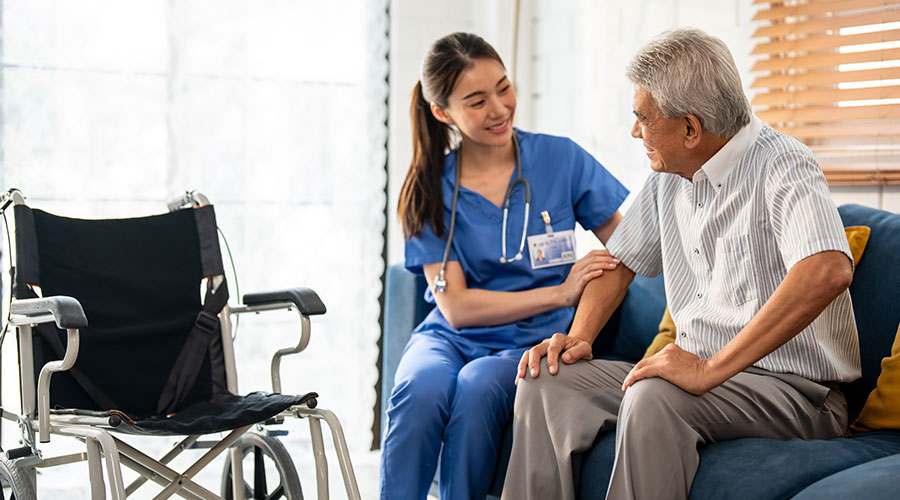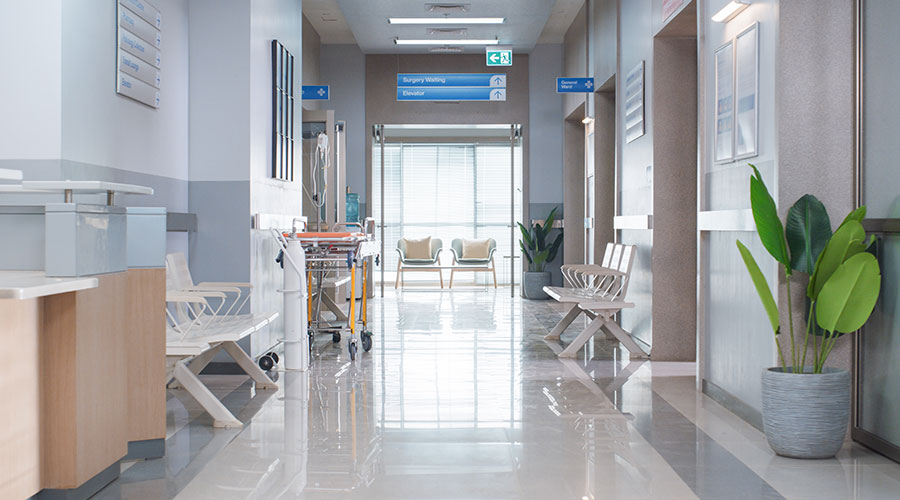Hundreds of thousands of patients fall each year, and 30 to 50% of those patients sustain an injury. While falls are a major problem in health care settings, the risk of falling is even greater for hospitalized patients due to an unfamiliar environment, new medications and symptoms of acute illness. The number of patient falls and falls with injury can be reduced substantially with preventive measures.
A new study, “Patient Activation Related to Fall Prevention: A Multisite Study,” in the March issue of The Joint Commission Journal on Quality and Patient Safety examines the role that patient activation played in the Fall TIPS (Tailoring Interventions for Patient Safety) program, a three-step fall prevention process, with patients and their families. The Fall TIPS process includes:
- Conducting a fall risk assessment
- Developing a personalized fall prevention plan
- Consistently following the plan, along with the use of universal fall precautions
Researchers surveyed a random sample of adult patients before and after implementation of Fall TIPS at three health care systems including Brigham and Women’s Hospital, Boston; Montefiore Medical Center, New York; and New York-Presbyterian Hospital, New York. The short form Patient Activation Measure (PAM-13) was adapted for fall prevention. The 13-item survey assessed a patient’s knowledge, skill and confidence in managing his or her own fall prevention, also known as “patient activation.”
Findings showed patient activation improved from preintervention to postintervention at all sites. Overall, the mean PAM score improved from 63.82 to 80.88 as patients with access to the Fall TIPS program were more activated and engaged in their fall prevention plan.
“Formalizing strategies to facilitate and document hospital patient engagement in their own fall prevention approach has been a missing link in current evidence translation efforts to date,” note Terry P. Haines, PhD, and Anne-Marie Hill, PhD, in an accompanying editorial. “It will be fascinating to see results of future research along this path, and how broadly concepts related to patient activation can be applied to fall prevention both in hospitals and beyond.”
Also featured in the March issue:
- “Designing Quality Improvement Collaboratives for Dissemination: Lessons from a Multiple Case Study of the Implementation of Obstetric Emergency Safety Bundles” (A study based on three quality improvement collaboratives, representing more than 300 hospitals)
- “A Process Approach to Decreasing Hospital Onset Clostridium difficile Infections” (Stony Brook University Hospital, New York)
- “A Multifaceted, Student-Led Approach to Improving the Opioid Prescribing Practices of Hospital Medicine Clinicians” (Mount Sinai Hospital, New York)
- “Lessons Learned from a Systems Approach to Engaging Patients and Families in Patient Safety Transformation” (MedStar Institute for Quality and Safety, Washington, D.C.)
- “Targeted Moments of Environmental Disinfection” (Diversey, Inc., Fort Mill, South Carolina)
- “Reduce the Likelihood of Patient Harm Associated with the Use of Anticoagulant Therapy”: Commentary from the Anticoagulation Forum on the Updated Joint Commission NPSG.03.05.01 Elements of Performance” (A commentary by eight national experts)
For more information, visit The Joint Commission Journal on Quality and Patient Safety website.
 Designing Healthcare Facilities for Pediatric and Geriatric Populations
Designing Healthcare Facilities for Pediatric and Geriatric Populations Kaiser Permanente Announces New Hospital Tower at Sunnyside Medical Center
Kaiser Permanente Announces New Hospital Tower at Sunnyside Medical Center Building Disaster Resilience Through Collaboration
Building Disaster Resilience Through Collaboration Amae Health Expands to New York City
Amae Health Expands to New York City Hospital for Special Surgery Opens Two New Facilities in New Jersey
Hospital for Special Surgery Opens Two New Facilities in New Jersey